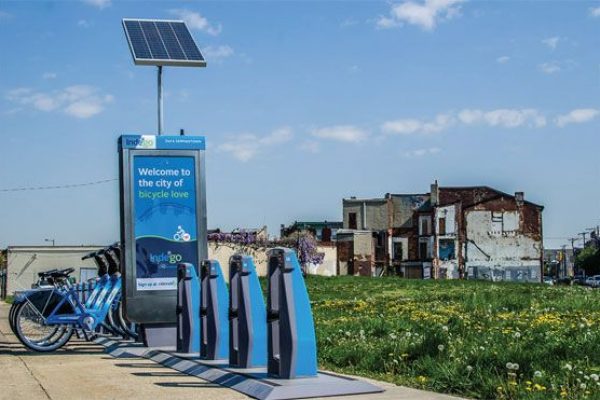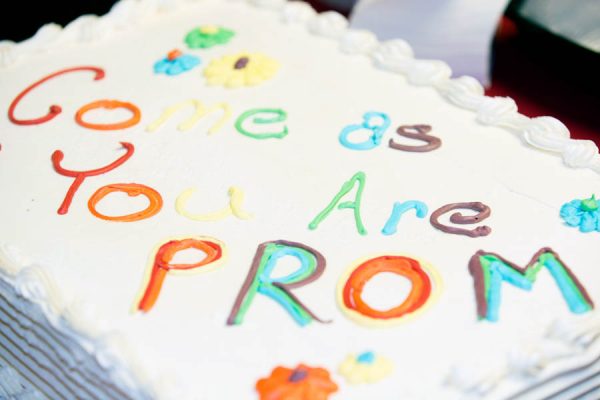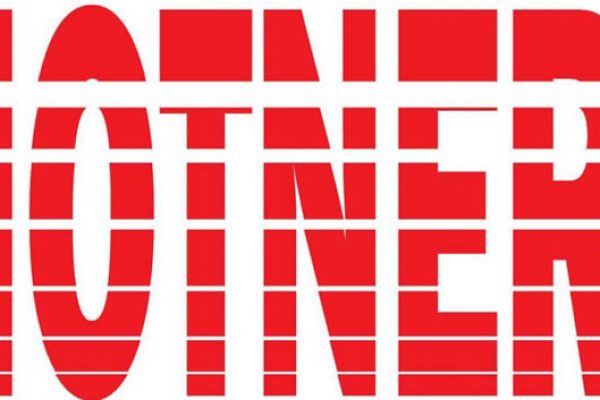Local Author Explores The History Of A Fascinating Neighborhood
Harry Kyriakodis is a bookish kind of guy. “Over the last ten or twelve years I’ve accumulated a huge collection of Philadelphia books—I have over 2,300 titles in my personal collection,” he says. Yet of all those books, not one was about the neighborhood of Northern Liberties. “It was always just kind of glossed over.”
Harry’s new book, Northern Liberties: The Story of a Philadelphia Riverward, finally fills that gap.
This project actually started with Harry’s first book, published in 2011, called Philadelphia’s Lost Waterfront. “I’d been riding my bike for ten years through various neighborhoods, and I was always drawn to Northern Liberties,” says Harry.
“There was this dead zone between Old City and Northern Liberties that really got me interested in what’s happened with this neighborhood—the good, the bad, and the ugly.” His inquiry into this once-thriving dead space at the south end of Northern Liberties eventually turned into a book. In Philadelphia’s Lost Waterfront, he writes, “All told, this is surely the most storied and interesting section of Philadelphia, as it has changed the most—for good or bad—over time. A strong case can be made that it has changed more than anyplace in America.”
The path for further inquiry was open, and his new book is a follow-up of sorts that looks at the neighborhood as a Northern Liberties: The Story of a Philadelphia Riverward is “a basic history of how the neighborhood was settled, and what’s happened in the 330 years since then,” said Harry. He focuses on such influential things as the early firefighters in the neighborhood, the various religions that came to the area, the different immigrant groups, and the banks, schools, and hospitals that made Northern Liberties function as a community.
There are interesting facts: The neighborhood was initially called “The North End,” as it was at the north end of Philadelphia. Harry also discusses the manufacturing that was once crucial to the neighborhood, including the breweries that operated in Northern Liberties until the 1970s and 80s. “I finish up with what’s been going on today, in the last twenty years,” said Harry. “It’s become a vibrant community.”
The 330 years of history are equally spaced and in chronological order throughout the book, so it’s easy for readers to follow the story of Northern Liberties. In addition to information garnered from his vast collection of books, Harry used the Internet and newspapers as sources. “It only took me about six months, since all the information was there and I just had to put it together in an orderly way,” said Harry.
Matt Ruben, president of the Northern Liberties Neighbors Association (NLNA), wrote the forward to the book, and Harry expects to arrange some events with the NLNA this spring to celebrate his new work. While it’s still too cold to go out and do much neighborhood exploration, this is the perfect time to brush up on some local history from the comfort of your own home. If you want to get Northern Liberties: The Story of a Philadelphia Riverward for yourself, the book is available for purchase at most bookstores, as well as online at Amazon and The History Press, and will be for sale at The Foodery at 2nd and Poplar Street in Northern Liberties.
From the introduction of Northern Liberties: The Story of a Philadelphia Riverward:
Standing atop the tower of Philadelphia’s City Hall is a monumental statue of William Penn, Quaker founder of both Philadelphia and Pennsylvania. Some say that the 27-ton bronze sculpture was positioned to look northeastwards in the direction of Tacony (the place in Philadelphia where it was cast), while others say that it faces Penn Treaty Park (where Penn made his famous friendship accord with Native Americans of the region). Either way, though, William Penn gazes first at Northern Liberties.
This is perhaps fitting, for Northern Liberties represents the best and the worst aspects of William Penn’s settlement on the Delaware River. NoLibs, as the neighborhood is often called, is fraught with ideas and things that made Philadelphia great: inventing, manufacturing, religious freedom, firefighting, urban renewal, and so
on. It also has a history of negative characteristics and influences: drinking, decadence, hostility, urban blight and so forth. Yet this varied panorama of history is precisely what gives Northern Liberties its peculiar air.







